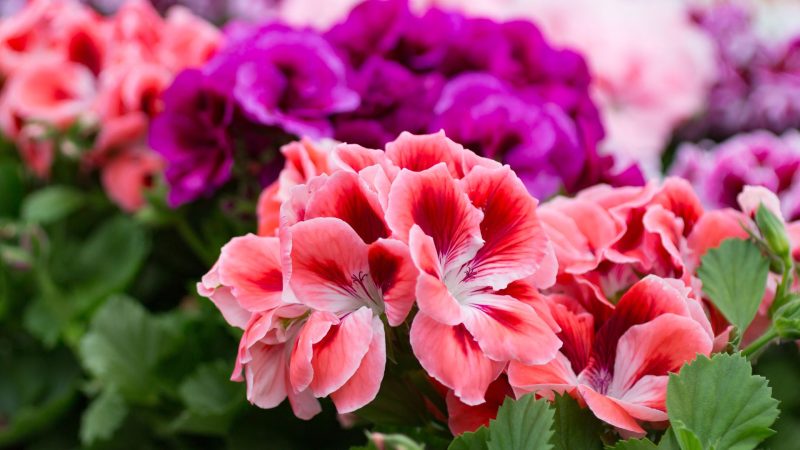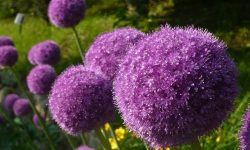Geraniums are a favorite among gardeners for their bright blooms, fragrant leaves, and easy-growing nature. But when cold weather approaches, many wonder what to do with these vibrant plants. Should they be tossed at the end of the season, or can they be saved to bloom again? The good news is that geraniums are surprisingly resilient—and with the right care, you can overwinter them and enjoy an even more impressive display next spring.
Overwintering geraniums not only saves money but also gives you stronger, fuller plants each year. Whether you’re growing them in containers, garden beds, or hanging baskets, this guide will show you exactly how to prepare, store, and revive your geraniums through the cold months. With just a little effort, your garden will be bursting with colorful blooms long before new plants hit the nursery shelves.
Why Overwintering Geraniums Matters

Overwintering geraniums is more than just a cost-saving strategy—it’s a smart way to preserve healthy, mature plants that are already adapted to your garden’s conditions. When you overwinter geraniums successfully, you give them a head start for the next growing season. These plants already have established root systems, which means they can produce more vigorous foliage and abundant blooms earlier in the spring than newly purchased seedlings.
This practice also allows you to retain rare or heirloom varieties that might not be available commercially each year. If you’ve nurtured a specific type of geranium with unique colors or scents, overwintering ensures you don’t lose it. Additionally, it’s an environmentally friendly approach, reducing waste and the need to buy replacements. Whether you’re an experienced gardener or just beginning, learning how to overwinter geraniums can enrich your gardening journey and keep your landscape colorful and thriving year after year.
Choosing the Right Overwintering Method
Choosing the right overwintering method for your geraniums depends largely on your local climate, available space, and how much time you can dedicate to plant care during the winter months. There are three main approaches: growing indoors as houseplants, storing bare-root plants in dormancy, and keeping them in containers in a cool, bright location.
If you live in a region with harsh winters and have sunny indoor space, bringing your geraniums indoors and treating them as houseplants is a great choice. This method allows them to keep growing, albeit slowly, and you’ll enjoy greenery throughout the colder months. For those with less space or limited light, bare-root storage is ideal. It requires minimal care and is perfect for gardeners looking to preserve many plants without taking up room. Simply shake off excess soil, allow the roots to dry, and store the plants in paper bags or boxes in a cool, dark area.
Container storage in a frost-free but unheated garage, basement, or shed offers a middle ground. Plants stay in their pots, go semi-dormant, and only need occasional watering. Whichever method you choose, make sure it aligns with your space, schedule, and gardening goals to ensure healthy regrowth when spring returns.
Method 1: Growing Geraniums Indoors Through Winter
Bringing Your Plants Inside at the Right Time
Before the first hard frost arrives, carefully dig up your geraniums or bring in your containers. It’s best to transition them indoors when nighttime temperatures drop below 50°F (10°C). This reduces shock and helps your plants adapt gradually to indoor conditions.
Preparing Geraniums for Indoor Conditions
Trim back your geraniums by about one-third to reduce stress and promote fuller growth. Remove dead leaves, inspect for pests, and gently rinse the plant if needed. Place them in clean pots with well-draining soil if transferring from garden beds.
Creating the Ideal Indoor Environment
Geraniums need bright light to thrive indoors. Place them near a south- or west-facing window where they’ll receive at least 6 hours of direct sunlight daily. If natural light is limited, supplement with a grow light to prevent legginess and weak growth.
Watering and Maintenance Through Winter
Let the top inch of soil dry between waterings. Overwatering is a common issue indoors, so always check moisture levels first. Avoid fertilizing during winter dormancy. If your plants remain active, you can use a diluted fertilizer monthly starting in late winter.
Encouraging Healthy Growth for Spring
Around late February or early March, your indoor geraniums may begin putting out new shoots. This is the time to prune again, remove any weak growth, and gradually increase watering and light exposure. This indoor care routine helps ensure robust plants ready to bloom as spring returns.
Method 2: Storing Geraniums Dormant Indoors
Preparing Geraniums for Dormant Storage
Before the first frost, carefully dig up your geraniums from the garden. Gently shake off excess soil and remove any damaged or yellowing leaves. Avoid watering or potting them at this stage to encourage dormancy.
Choosing the Right Storage Location
Find a cool, dark, and dry place such as a basement, garage, or cellar with temperatures between 45°F and 55°F (7°C to 13°C). Good air circulation is important to prevent mold and rot during storage.
Maintaining Dormant Plants Over Winter
Check the stored plants monthly. If the stems or roots appear dried out, lightly mist them to prevent complete dehydration. Avoid overwatering or placing them in humid conditions, as this can cause fungal problems.
Reviving Geraniums in Early Spring
When temperatures start to rise, soak the roots in lukewarm water for a few hours to rehydrate. Trim back any leggy or dead stems, then pot the plants in fresh soil. Place them in a bright spot indoors to encourage new growth before moving them back outside after the last frost.
Method 3: Overwintering in Containers Without Forcing Dormancy
Bringing Potted Geraniums Indoors
Before the first frost, bring your geraniums indoors while they remain in their containers. If they are planted in the garden, carefully dig them up and transplant into pots with well-draining soil. This method avoids forcing dormancy and keeps plants semi-active through winter.
Providing Adequate Light and Temperature
Place the pots in a bright location such as a south- or west-facing window where the plants receive at least 4 to 6 hours of sunlight daily. If natural light is insufficient, supplement with grow lights. Maintain indoor temperatures between 60°F and 70°F (15°C to 21°C), avoiding cold drafts or sudden temperature changes.
Watering and Fertilizing During Winter
Water your geraniums sparingly, allowing the top inch of soil to dry out between waterings. Overwatering can lead to root rot, so it’s important to keep soil lightly moist but not soggy. Avoid fertilizing until late winter or early spring when new growth begins to appear.
Managing Growth and Maintenance
Since plants remain semi-active, they may develop some new growth or flowers during winter. Remove any dead or yellowing leaves regularly and pinch back leggy stems to encourage bushier growth. Good air circulation around the plants helps prevent fungal diseases.
Preparing for Spring Transition
As spring approaches and temperatures rise, gradually increase watering and begin light fertilization to support renewed growth. Once outdoor conditions are safe from frost, slowly acclimate your geraniums to the outdoors before transplanting them back into the garden or larger containers.
When to Bring Geraniums Back to Life
The best time to revive overwintered geraniums is in early spring, about 6 to 8 weeks before your last expected frost date. As daylight increases and temperatures begin to warm, dormant or semi-dormant geraniums respond well to gentle rehydration, light, and pruning.
For plants stored bare-root or in dormancy, rehydrate them by soaking the roots in lukewarm water for a few hours. Then pot them up in fresh soil and place them in a bright, warm spot. For those kept in containers indoors, begin increasing watering and provide a balanced liquid fertilizer to stimulate new growth.
Prune leggy or damaged stems to encourage fuller growth, and rotate the pots for even light exposure. By gradually reintroducing warmth and care, you’ll have vigorous geraniums ready to thrive outdoors once all frost danger has passed.
Pruning and Fertilizing for Spring Growth
As overwintered geraniums awaken in early spring, proper pruning and fertilizing are essential to promote healthy, vigorous new growth. Begin by trimming away any leggy, dead, or damaged stems using clean, sharp scissors or pruners. This not only improves the plant’s shape but also stimulates branching and denser foliage.
Pinching back growing tips encourages a fuller, bushier plant and helps control the plant’s size before it goes back outdoors. Be sure to remove any yellowing or diseased leaves to prevent pest and fungal issues.
Once new growth appears, start feeding your geraniums with a balanced, water-soluble fertilizer—ideally one with equal parts nitrogen, phosphorus, and potassium (such as 10-10-10). Apply every 2–3 weeks during active growth. For container-grown plants, ensure good drainage and avoid over-fertilizing, which can lead to soft, weak growth.
By pruning early and feeding consistently, your geraniums will be lush, sturdy, and ready to produce vibrant blooms throughout the spring and summer.
Common Mistakes to Avoid
Even with proper care, overwintered geraniums can face a few challenges. One common issue is yellowing or dropping leaves, often caused by too much or too little light. If your geraniums are growing indoors, ensure they receive at least 6 hours of bright, indirect sunlight daily. For dormant storage, occasional yellowing is normal, but excessive leaf loss may indicate temperature fluctuations or moisture problems.
Mold or mildew on stored plants is another concern, especially when air circulation is poor or humidity is too high. To prevent this, always check that stored geraniums are dry before placing them in boxes or bags, and open containers occasionally to allow fresh air in.
Pest infestations, such as aphids or spider mites, can also appear on indoor geraniums. Check leaves regularly and rinse or treat with insecticidal soap at the first sign of trouble. Lastly, if your geraniums show no signs of life by early spring, they may not have survived winter due to rot or dehydration. Remove any mushy, blackened stems and assess root firmness—healthy roots should still be plump and white. If they’re shriveled or rotten, it’s best to start with new cuttings or plants.
Long-Term Benefits of Overwintering Geraniums
Overwintering geraniums offers more than just short-term savings—it brings lasting value to your garden. By preserving mature plants year after year, you maintain strong root systems and well-established growth patterns that result in earlier blooms and more vigorous flowering each spring. Overwintered geraniums often outperform newly purchased plants, thanks to their resilience and adaptability.
Additionally, overwintering allows you to keep rare or favorite varieties that may not be easily found again. It also supports sustainable gardening by reducing waste and minimizing the need to buy replacements annually. With each season, your geraniums become hardier and more lush, giving you a fuller, more colorful garden with less effort over time.
FAQ: Common Questions About Overwintering Geraniums
How cold is too cold for geraniums to survive outside?
Geraniums are sensitive to frost and typically cannot survive temperatures below 45°F (7°C). Once nighttime temperatures start to dip into the 40s, it’s time to bring your plants indoors. A sudden frost can cause irreversible damage to stems and roots, so timing is crucial when transitioning them for overwintering.
Can I leave geraniums in pots outside all winter?
Only if you live in a warm climate where winter temperatures stay above 45°F (7°C). Geraniums are not frost-tolerant, and even a light freeze can damage or kill them. In colder regions, potted geraniums left outdoors will likely not survive the winter. If you want to keep your plants healthy for the next season, it’s best to bring them indoors before the first frost or use one of the proven overwintering methods to protect them from the cold.
Do I need to water geraniums during winter dormancy?
Yes, but only lightly. If you’re overwintering dormant bare-root geraniums, a very light misting once a month prevents them from drying out completely. For geraniums stored in containers, water sparingly every 4–6 weeks—just enough to keep the roots alive without encouraging active growth.
When should I prune overwintered geraniums for best spring growth?
The best time to prune overwintered geraniums is in late winter or early spring—about 4–6 weeks before the last expected frost in your area. Trim back one-third to half of the plant to remove leggy, weak stems and encourage bushier, more vigorous new growth as the plant awakens from dormancy.
Why are my overwintered geraniums looking pale or leggy?
Pale or leggy growth usually indicates low light levels or overly warm indoor conditions. Geraniums need bright, indirect sunlight during winter—ideally from a south- or west-facing window. If natural light is insufficient, consider supplementing with a grow light to maintain healthy foliage and prevent weak stretching toward the light source.
Conclusion
Overwintering geraniums is a smart way to preserve your favorite plants, save money, and enjoy an earlier, more vibrant garden in spring. Whether you choose to grow them indoors or store them dormant, success comes down to timing, light, temperature, and a little bit of care. By following the methods and tips in this guide, you can ensure your geraniums not only survive winter but thrive when warm weather returns. With proper overwintering techniques, your geraniums will reward you with long-lasting beauty year after year.






